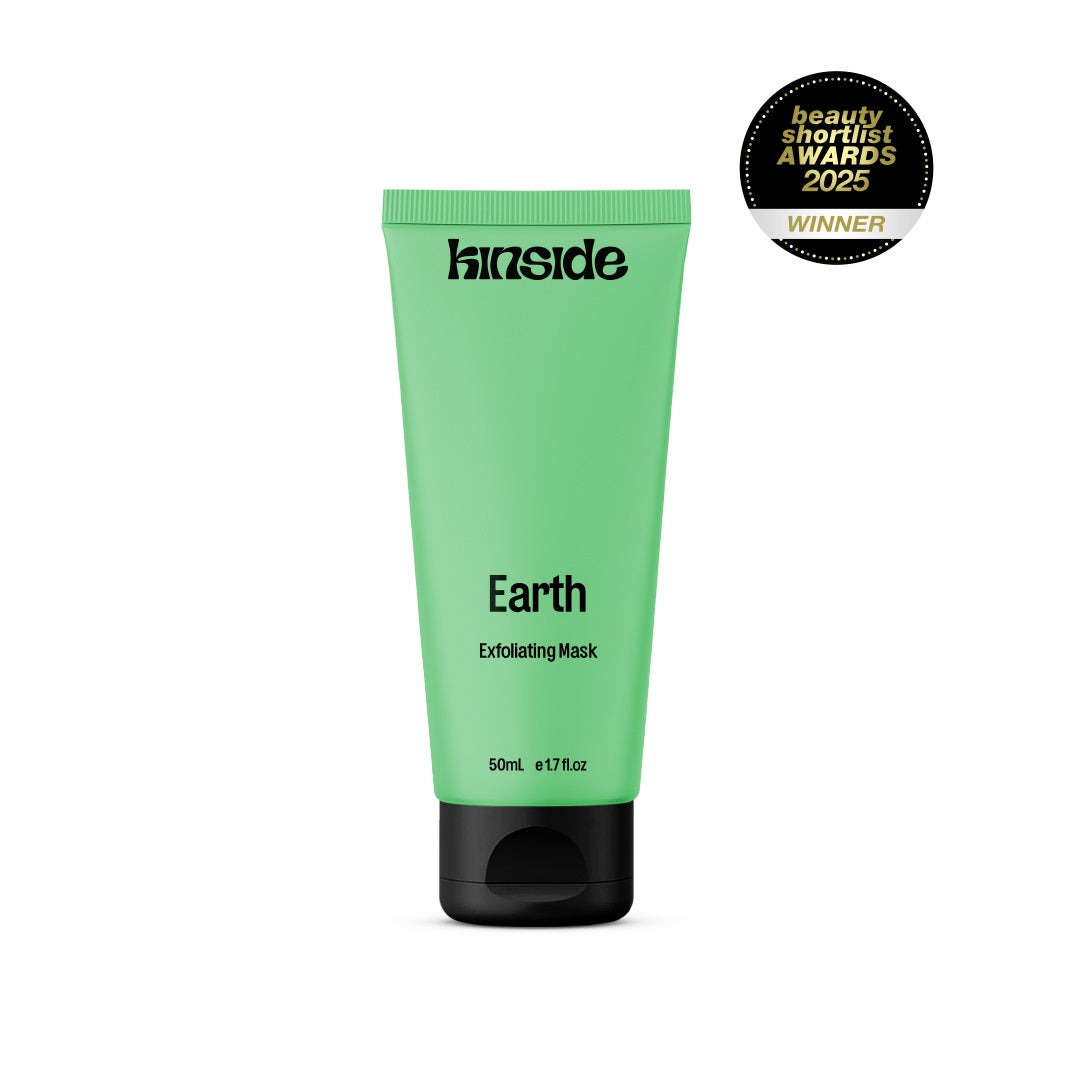Navigating the world of skincare as a teenager can be overwhelming. With so many products and conflicting advice, it’s hard to know where to start. But building a skincare routine tailored to your skin's specific needs doesn’t have to be complicated. Whether you’re dealing with acne, oily skin, or simply want to keep your skin healthy and radiant, this guide will walk you through the essential steps to create the perfect skincare routine for teenagers.
1. Understanding Your Skin Type
The first step in building a skincare routine is understanding your skin type. Teenage skin is unique because it’s still developing and can be more sensitive to certain ingredients. Common skin types among teenagers include:
- Oily Skin: Characterised by a shiny complexion, large pores, and frequent breakouts.
- Dry Skin: Feels tight, rough, or flaky, and may have dullness or redness.
- Combination Skin: A mix of oily and dry areas, typically with an oily T-zone (forehead, nose, and chin).
- Sensitive Skin: Easily irritated by products, often resulting in redness, itching, or burning sensations.
Knowing your skin type will help you choose the right products and tailor your routine to address your specific concerns.
2. Cleansing: The Foundation of a Good Routine
Cleansing is the cornerstone of any skincare routine. It helps remove dirt, oil, and impurities that can clog pores and lead to breakouts. For teenagers, it’s crucial to choose a gentle face wash that won’t strip the skin of its natural oils.
- For Oily Skin: Opt for a gentle face wash formulated for oily skin. Look for ingredients like desert lime and prickly pear oil, known for its antiseptic and anti-inflammatory properties, which helps control excess oil and prevent acne. Products created specifically for teenage skin are ideal as they cleanse without causing irritation.
- For Dry or Sensitive Skin: Choose a hydrating cleanser that nourishes the skin while removing impurities. Ingredients like aloe vera and glycerin can help soothe and hydrate the skin, preventing that tight, dry feeling after washing.
- For Combination Skin: A balanced cleanser that targets both oily and dry areas is key. Products that are pH-balanced and include mild exfoliating agents can help maintain a clear complexion.
Cleansing should be done twice a day—once in the morning and once before bed—to keep the skin clean and healthy.
3. Moisturising: Keeping Your Skin Hydrated
Regardless of your skin type, moisturising is a crucial step in any skincare routine. Moisturisers help lock in hydration, keeping the skin soft, supple, and balanced.
- For Oily Skin: Look for a lightweight moisturiser. Ingredients like jojoba oil mimic the skin’s natural sebum, providing hydration without clogging pores. Sage extract is another excellent addition, as it helps control excess oil production while maintaining skin balance.
- For Dry Skin: A moisturiser with ingredients that contain mango butter or zinc oxide can provide the necessary hydration to prevent flakiness and maintain a smooth complexion.
- For Sensitive Skin: Choose a fragrance-free, gentle moisturiser that soothes and calms the skin. Prickly pear oil and gotu kola is an excellent choice, known for its anti-inflammatory properties and ability to nourish the skin without leaving a greasy residue.
Moisturising should be done immediately after cleansing, while the skin is still damp, to lock in moisture effectively.
4. Sun Protection: The Ultimate Preventive Measure
Sun protection is often overlooked but is one of the most important steps in any skincare routine, especially for teenagers. The sun's harmful UV rays can cause premature aging, sunburn, and increase the risk of skin cancer.
- Choose a SPF50+ Sunscreen: A broad-spectrum sunscreen with SPF50+ provides adequate protection from both UVA and UVB rays. Zinc oxide (non-nano) is a key ingredient in sunscreens that offers natural, reef-friendly sun protection without clogging pores, making it ideal for acne-prone skin.
- Non-Comedogenic Formulas: Look for sunscreens that are non-comedogenic, meaning they won’t clog pores. This is especially important for teens with acne-prone skin.
- Apply Generously and Reapply: Sunscreen should be applied generously and reapplied every two hours when outdoors. A product that doubles as a moisturiser and sunscreen can make this step easier.
Protecting your skin from the sun is not just about preventing burns; it’s about maintaining healthy, youthful skin in the long run.
5. Addressing Acne and Blemishes
Acne is one of the most common skin concerns for teenagers. Hormonal changes during puberty can lead to increased oil production, which can clog pores and cause breakouts. While it might be tempting to use harsh treatments, these can often do more harm than good.
- Blemish Serums: Natural blemish serums that also act as a spot treatment for targeted specific areas that contain natural actives like lemon myrtle extract, magnolia extract, and CM Glucan can be highly effective. These ingredients help reduce inflammation, kill acne-causing bacteria, and promote healing without drying out the skin.
- Consistency is Key: Acne treatment requires consistency. Use your blemish serum or spot treatment daily and be patient—it can take several weeks to see significant improvement.
By addressing acne with gentle, natural products, you can keep breakouts under control without compromising your skin’s health.
6. Exfoliating: Clearing Away Dead Skin Cells
Exfoliation is an essential part of a skincare routine but should be done carefully, especially for teenage skin. Exfoliating helps remove dead skin cells, unclog pores, and promote a brighter complexion.
- Gentle Exfoliators: Choose an exfoliator that is gentle and suitable for your skin type. Natural exfoliants like tea tree powder and olive pit powder are effective without being abrasive.
- Frequency: For most teenagers, exfoliating once or twice a week is sufficient. Over-exfoliating can strip the skin of its natural oils and lead to irritation.
- Masks and Scrubs: Consider incorporating a weekly mask or scrub into your routine. Products with ingredients like white kaolin clay and chlorophyll can help absorb excess oil and clear impurities, leaving your skin refreshed and smooth.
Regular exfoliation helps maintain a clear complexion and allows other skincare products to penetrate more effectively.
7. Hormonal Changes and Skin Care
As teenagers progress through puberty, hormonal changes can significantly impact their skin. For girls, fluctuations in hormone levels during menstrual cycles can lead to breakouts, while boys may experience increased oil production that can cause acne.
- Understanding Hormonal Acne: Hormonal acne typically appears along the jawline and chin and can be persistent. Natural treatments that include anti-inflammatory ingredients like magnolia extract and polylysine can help manage these breakouts.
- Keeping Skin Balanced: It’s essential to maintain a consistent skincare routine during hormonal changes. Avoid using harsh products that can exacerbate breakouts or cause dryness.
By being mindful of how hormones affect your skin, you can adjust your routine as needed to keep your complexion clear and balanced.
8. Why Choose Natural and Clean Skincare?
There’s a growing movement towards natural and clean skincare, particularly among teenagers who are becoming more aware of the ingredients in their products. Conventional skincare products often contain harsh chemicals like parabens, sulphates, and synthetic fragrances that can irritate young skin and disrupt its natural balance.
- Natural Ingredients: Ingredients like aloe vera, zinc oxide, Davidson plum, Kakadu plum, desert lime and lemon myrtle are not only effective but also gentle enough for daily use. They work with your skin’s natural processes rather than against them, helping to maintain a healthy microbiome and protect your skin barrier.
- Eco-Friendly Choices: Many natural skincare brands are also committed to sustainability, offering eco-friendly packaging and cruelty-free products. Choosing these products not only benefits your skin but also the environment.
By choosing clean and natural skincare, you’re setting the foundation for a lifetime of healthy skin.
9. Conclusion: Your Skin Care Routine for the Long Haul
Building a skincare routine as a teenager is about more than just dealing with current skin issues—it’s about establishing habits that will benefit your skin for years to come. By focusing on gentle cleansing, consistent moisturising, sun protection, and addressing specific concerns like acne, you can achieve and maintain healthy, glowing skin.
Remember, everyone’s skin is different, so it may take some time to find the perfect routine that works for you. Be patient, stay consistent, and most importantly, choose products that are kind to your skin.








